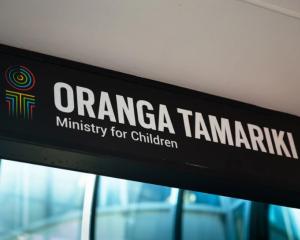A Lincoln University building has been shut down after a concerned staff member took a swab of some dust which returned a positive test for asbestos.
The university is now working with "anxious" staff after the hazardous substance discovery was made last month in the 60-year-old Riddolls Building.
The Canterbury District Health Board has been called in and several more tests, checks, and cleans have been carried out.
Murray Dickson, the university's group manager corporate services, say they now have been cleared of danger, but staff can enter now only under strict restricted access conditions.
After the devastating earthquakes, several large university buildings were deemed too unsafe to occupy and staff and students were moved to other buildings across the campus.
The Riddolls Building was renovated, and Mr Dickson said that university records showed that there was asbestos in the building, which was built in 1952.
"It was taken very seriously and all procedures were followed before we moved in," Mr Dickson said.
Science labs and associated work spaces, including chillers, were moved in.
But he believes that stormy weather which struck the region last last month caused some asbestos dust to emerge.
A concerned staff member took some dust samples in the building, which Mr Dickson said they were encouraged to do in such circumstances.
As a precautionary measure, the building was shut down while they awaited the results.
Canterbury District Health Board were sent three samples on July 17, it confirmed yesterday.
Two came back positive for Chrysotile (white asbestos) and one contained both Crysotile and Amosite (brown asbestos).
On July 22 and 23, CDHB community and public health technical officers visited the site and took two more bulk samples.
One of the two bulk samples are positive for white asbestos.
The university's 'spill response team' carried out clean-up operations on advice from community and public health.
On August 19, the university sent six samples for testing, and only one sample contained brown asbestos, a CDHB spokeswoman confirmed.
"We've done a lot of remedial work and blocked off some gaps between rooms and ceiling spaces, where dust may have come from," Mr Dickson said.
"We've now got full clearance. There hasn't been an airborne sample that we haven't had a clearance from."
Staff are entering the building under restricted access, he said.
"It's obviously an emotive topic and one which some staff are anxious over, and some are not.
"We're working with staff and want to make them happy and satisfied. We're comfortable with what we've done."
Asbestos exposure can lead to breathing difficulties or cancer but symptoms may not become apparent for decades.
Mr Dickson wasn't aware of any staff, or contractors who had been doing work on the building, as having undergone medical tests to check if their lungs have been affected by the killer dust.
But he urged anyone with concerns to notify the university, whose alumni includes All Blacks captain Richie McCaw, mountaineer Mark Inglis, and double Victoria Cross winner and war hero, Charles Upham.
Fletcher Building's Winstone Wallboards unit has temporarily closed a plasterboard factory in Christchurch after finding traces of asbestos in the building.
The company was told of the discovery on Monday by an external testing agency and has closed the entire site as a precautionary measure to allow for more testing.












